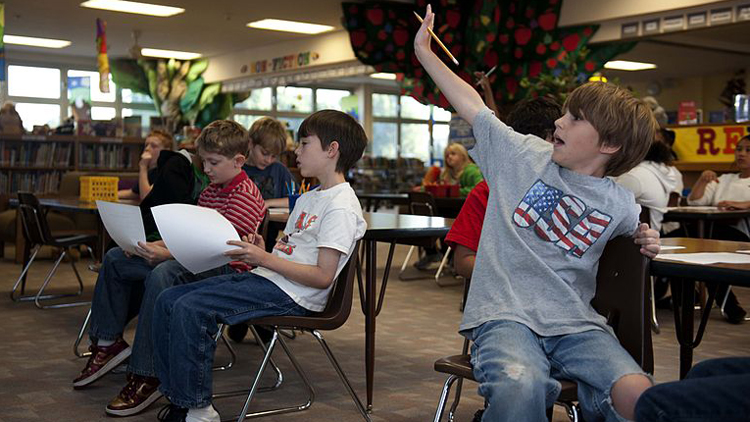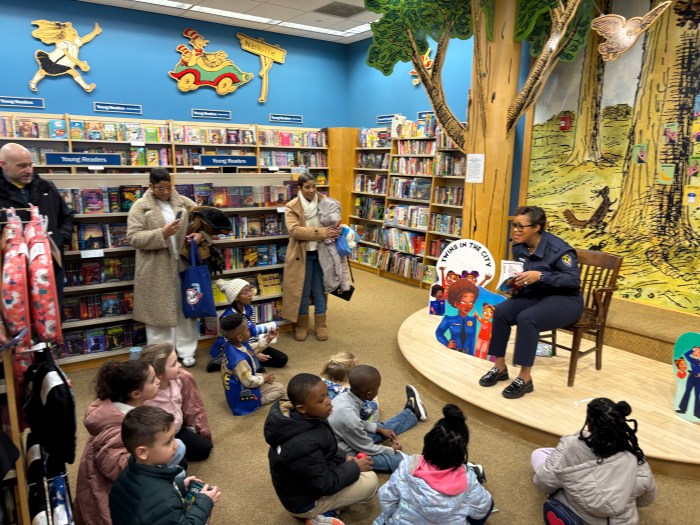How many brands such as Mug Root Beer, Nike sportswear and Barbie dolls can be plugged in New York State standardized test questions before parents of elementary and middle school students object?
The answer, it appears, is that even one is too many. That’s according to critics who believe that mentioning products in recent exams for students in grades 3 through 8 amounts to inappropriate corporate advertising in public education. But, Pearson, the international publishing giant that made the tests, said they weren’t compensated for plugging the brands—although questions linger about ties between the companies.
“Whether Pearson was compensated isn’t really the question,” said Josh Golin, president of the Campaign for Commercial-Free Childhood. “The effect on the student isn’t dependent on if it was paid.”
Pearson, whose North American headquarters are in New Jersey, signed a $32 million, five-year contract to develop the tests for the state Education Department in 2011. The English Language Arts (ELA) exams were held earlier this month and the Mathematics tests start Tuesday. The assessments are an important part of the Common Core initiative, as they collect the data needed to implement the education reform.
“Brand names are occasionally referenced in many non-fiction and informational passages that have previously been published for other purposes,” the state Education Department said on its website in reference to the test questions. “Brand names are not purposely selected for inclusion on the test.”
Pearson spokeswoman Stacy Skelly said in a statement that the passages were chosen by the state in attempt “to help students read and analyze more authentic literature and workplace documents.” She said that neither the company nor the education department received any compensation. “The trademark symbol is included in order to follow rights and permission laws and procedures,” she said of when brands appear in exam text.
Parents of students on Long Island were not buying it.
“How dare they expose children to advertisements,” said GiGi Guiliano, an East Islip mother of three. “If they wanted to get the point across about, let’s say, overcoming obstacles and perseverance, did they have to use Nike ‘Just Do It’? They could have used many other historical figures or analogies to get the point across. Shame on them!”
Fueling the suspicion about the test questions that appear to double as advertisements is the secrecy surrounding their content. Teachers and principals must sign confidentiality agreements ensuring that the test questions aren’t leaked either in advance of the test or after, leaving many parents and teachers guessing as to their content. One teacher anonymously leaked a copy of last year’s agreement to the Press that lays out specific protocol to keep the tests secret.
Yet students are under no such obligation to keep mum. In a guest post in The Washington Post’s education blog The Answer Sheet, eighth-grader Isaiah Schrader reported that in one of the reading comprehension sections of the 2013 ELA exam, he read a story about a dishwasher who spilled soda on the floor of the pizzeria where he worked.
But not just soda. Root beer. And not just any old root beer, but specifically Mug Root Beer.
“It was followed by a footnote, which informed test-takers that Mug™ was a registered trademark of PepsiCo,” Schrader wrote. “The brand of soda, the type of soda, and, come to think of it, the exact beverage was not necessary to the development of the story, nor was it mentioned in any of the confusing and analytical questions following the passage.”
The conclusion he and others arrived at is that plugging brands in test questions must be the new frontier for a form of advertising called product placement. Since TV viewers began circumventing commercials with DVR, advertisers have had to find innovative ways to reach potential consumers. For example, the judges of American Idol often drink Coca Cola products prominently displayed on their dais.
“Product placement, also known as native advertising, is incredibly appealing from the advertiser’s perspective,” says Bill Carmody, CEO of Trepoint, a Great Neck-based marketing services agency. “It essentially blurs the line between paid advertising and organic content. While it is much more effective for the advertiser, it can sometimes be perceived as false or misleading from the consumer’s point of view. Because there are few or no disclosures associated with product placement, it is often unclear what has been paid for versus an authentic decision being made by the content creator.”
This line is further blurred when it is exposed to children who don’t have the sophistication to distinguish between advertising and a story in a state-mandated test. The effects could be profound for children who don’t have the ability to distinguish between an advertisement and educational text, critics say.
“Before age eight they don’t understand advertising’s persuasive intent,” Golin told the Press. “Around eight, they start to understand, but studies show that they are still vulnerable. They are at an age where they believe what they read.”
Parents are also concerned that they can’t change the channel on the test like they can on a commercial break on TV at home.
“Even parents who are adept at media education, teaching children to recognize product placement, have no access to these exams,” Golin said. “It takes place in an environment where parents have no control.”
The companies identified as having had their products displayed on the tests reportedly deny any knowledge, cooperation, or paid advertising with Pearson, although education advocates Lace to the Top say they’ve found ties between Pearson and the brands. For example, PepsiCo, which owns Mug root beer, recently elected of Rona Fairhead to its Board of Directors. Fairhead’s experience includes various titles at Pearson and its subsidiaries.
Although Pearson maintains that no money changed hands, skeptics still can’t help but wonder if there was a quid pro quo or if it’s really just a coincidence.
“It seems unlikely that there was not a commercial purpose behind it,” Kat Lichter, an East Islip mother of two. “It makes absolutely no sense to me.”































